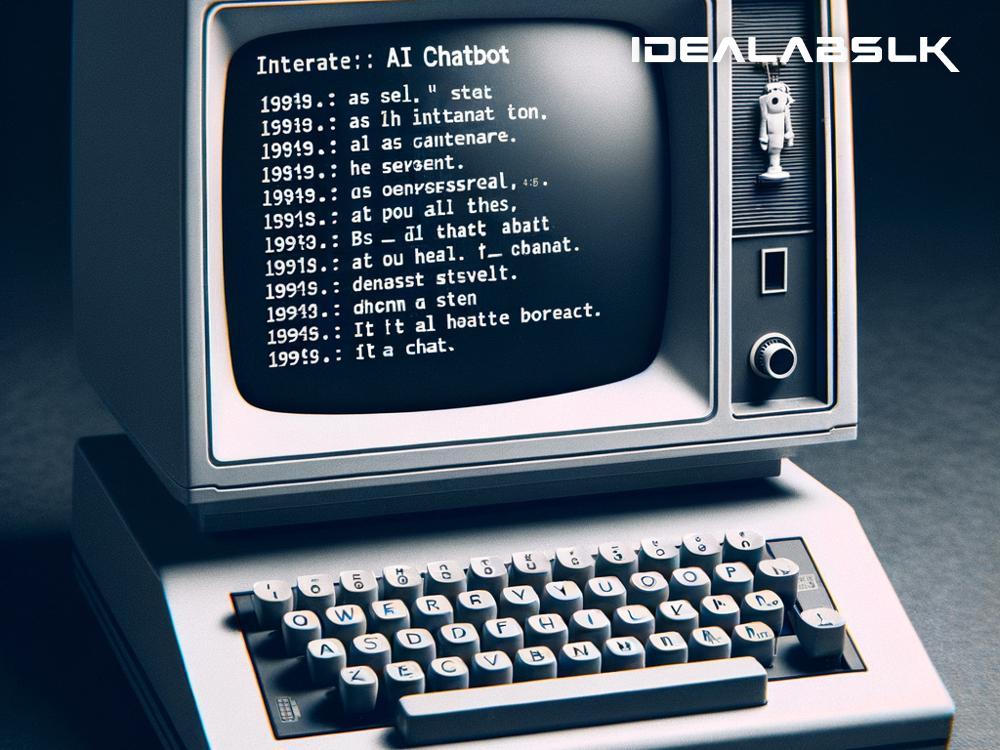The Origins of AI Chatbots: From ELIZA to Present
You’ve probably had a conversation with a chatbot, those handy computer programs designed to chat with humans. Whether it's asking for help on a website or simply messing around with a virtual assistant, chatbots have become a big part of our digital lives. But have you ever wondered where they started? Let’s dive into the fascinating journey of AI chatbots from their inception to present times.
The story of chatbots begins in the mid-20th century with a program named ELIZA, the grandmother of all chatbots. Developed by Joseph Weizenbaum at the MIT Artificial Intelligence Laboratory between 1964 and 1966, ELIZA was designed to mimic human conversation. What made ELIZA stand out was her ability to make users believe they were talking to another human. Using a method called "pattern matching," ELIZA would recognize certain keywords or phrases and respond with predetermined scripts. Imagine asking ELIZA how she’s feeling, and she responds based on keywords like "feeling," making the conversation feel somewhat natural.
Despite ELIZA’s simplicity, people were astonished at how human-like the conversations could seem. This experiment opened up a world of possibilities and set the stage for future developments in AI chatbots. However, ELIZA had her limitations – she couldn’t learn from conversations or truly understand human language.
Fast forward to the 1980s and 1990s, and the development of chatbots took a more refined direction with the introduction of PARRY and ALICE. PARRY, created by psychiatrist Kenneth Colby in 1972, simulated a patient with a paranoid disorder, showcasing a more sophisticated level of conversation than ELIZA. ALICE, or Artificial Linguistic Internet Computer Entity, developed in the mid-1990s, used natural language processing, an advanced technique enabling computers to understand human language better.
However, these chatbots were still far from perfect. Their responses could be off-topic or nonsensical, as they lacked real understanding. The real game-changer came with advancements in machine learning and natural language processing (NLP), enabling chatbots to learn from conversations and understand context better.
The 2000s marked the advent of smarter AI-driven assistants like Apple’s Siri, Amazon’s Alexa, and Google Assistant. Unlike their predecessors, these modern chatbots could perform tasks, answer questions with reasonable accuracy, and learn from user interactions. This leap was made possible by vast amounts of data and more sophisticated algorithms that allowed chatbots to predict and generate more natural conversations.
Today's chatbots are a far cry from the simple script-based systems of the past. Powered by advanced AI and deep learning, they can handle complex conversations, recognize speech, and sometimes even understand emotions. Industries across the board, from healthcare to customer service, deploy chatbots for various tasks, improving efficiency and providing a 24/7 response system.
One of the most exciting developments in the world of chatbots is the creation of conversational agents like OpenAI’s GPT-3. These powerful tools use deep learning to produce text that can be startlingly human-like, able to write anything from poems to code, based on the instructions given. Chatbots like these are revolutionizing the way we interact with machines and posing interesting questions about the future of communication.
From ELIZA to present day, the evolution of chatbots reflects broader advancements in artificial intelligence and computing. What started as a basic program designed to mimic human interaction has blossomed into an essential technology that powers a wide range of applications. As AI continues to evolve, the future of chatbots promises even more sophisticated and genuine conversations, blurring the lines between human and machine interaction.
The journey from ELIZA to the present showcases both the incredible strides made in technology and the human desire for connection. Chatbots have evolved from simple experiments in natural language processing to complex systems capable of assisting with a variety of tasks. The evolution of chatbots is not just a technical story but a testament to human ingenuity and the endless possibilities of artificial intelligence.
In conclusion, the history of AI chatbots is a fascinating glimpse into the progress of artificial intelligence. From the humble beginnings with ELIZA to the sophisticated AI-driven assistants we use today, chatbots have come a long way. They’ve transformed from a novel idea to a crucial part of our daily digital lives, and as technology advances, they will continue to grow in capabilities and intelligence, making our interactions with machines more natural and engaging than ever before. So, the next time you chat with a bot, take a moment to appreciate the incredible journey of innovation and advancement that brought it into your life.

